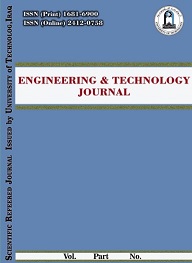Abstract
The most common conventional arrays which are used in 2D electrical
resistivity imaging techniques are Wenner array, dipole-dipole array and Wenner-
Schlumberger array. These arrays have been tested in the University of Technology
Camp / Iraq - Bagdad to find out the suitable array for type of subsurface structure
of the study area. Borehole data near the study area have been used to qualify
(confirm) the results. Six 2D images have been created (two images for each array)
in this study. The length of each image is 60 m with depth between 8 to 12 m. The
results show that Wenner-Schlumberger array is the most suitable array for the
target area. Moreover, the subsurface of the study area is consisting of three types
of soil (Silty clay, clay and sand).
resistivity imaging techniques are Wenner array, dipole-dipole array and Wenner-
Schlumberger array. These arrays have been tested in the University of Technology
Camp / Iraq - Bagdad to find out the suitable array for type of subsurface structure
of the study area. Borehole data near the study area have been used to qualify
(confirm) the results. Six 2D images have been created (two images for each array)
in this study. The length of each image is 60 m with depth between 8 to 12 m. The
results show that Wenner-Schlumberger array is the most suitable array for the
target area. Moreover, the subsurface of the study area is consisting of three types
of soil (Silty clay, clay and sand).
Keywords
Arrays
Electrical Resistivity Image
